
GEOMAGNETISM AND AERONOMY
metrics 2024
Bridging Geophysical Insights with Atmospheric Research
Introduction
GEOMAGNETISM AND AERONOMY, published by MAIK NAUKA/INTERPERIODICA/SPRINGER, is a prominent journal dedicated to advancing the fields of geophysics and planetary science. With ISSN 0016-7932 and E-ISSN 1555-645X, this journal serves as a critical platform for researchers to disseminate their findings on geomagnetic phenomena and aeronomical studies, fostering a deeper understanding of Earth's magnetic field dynamics and atmospheric interactions. Spanning publishing years from 1996 to 2024, it is categorized in the Q3 quartile for geophysics and Q4 for space and planetary science, reflecting its positioning within the academic landscape. Although not open access, readers and researchers can access valuable insights into geomagnetic and atmospheric research, contributing to ongoing discourse in these vital scientific domains. With a focus on innovative research, GEOMAGNETISM AND AERONOMY remains an essential resource for professionals and students aiming to deepen their expertise in Earth and planetary sciences.
Metrics 2024
 0.28
0.28 0.70
0.70 0.70
0.70 30
30Metrics History
Rank 2024
Scopus
IF (Web Of Science)
JCI (Web Of Science)
Quartile History
Similar Journals
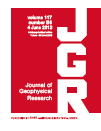
JOURNAL OF GEOPHYSICAL RESEARCH-SOLID EARTH
Exploring the Depths of Earth’s MysteriesJOURNAL OF GEOPHYSICAL RESEARCH-SOLID EARTH is a prestigious journal published by the American Geophysical Union, dedicated to advancing the study of solid Earth sciences. With an ISSN of 2169-9313 and E-ISSN of 2169-9356, it serves as a leading platform for rigorous research findings and innovative advancements within the fields of Earth and Planetary Sciences, Geochemistry and Petrology, Geophysics, and Space and Planetary Science. The journal has achieved an impressive Q1 quartile ranking across these categories, reflecting its high impact in the academic community and underscoring its role in influencing scientific discourse. Notably, it holds an esteemed position in Scopus, ranking 15th among 159 journals in Earth and Planetary Sciences (miscellaneous) as well as within the top 20 in several other geophysical domains. Researchers and practitioners are encouraged to contribute their work to this esteemed journal, which publishes comprehensive articles from 1979 to the present, thus providing a crucial repository of knowledge for those engaged in solid Earth research. Although it does not currently offer Open Access options, the journal's prestigious reputation ensures its articles reach a wide audience of academics, professionals, and students alike, fueling a deeper understanding of our planet's processes and challenges.

SPACE WEATHER-THE INTERNATIONAL JOURNAL OF RESEARCH AND APPLICATIONS
Fostering Innovation in Atmospheric ScienceSPACE WEATHER: THE INTERNATIONAL JOURNAL OF RESEARCH AND APPLICATIONS, published by the American Geophysical Union, is an influential journal dedicated to advancing the understanding of space weather phenomena and their applications. With an E-ISSN of 1542-7390 and a commendable Q2 ranking in the Atmospheric Science category for 2023, this journal serves as a vital platform for researchers, professionals, and students alike. The journal intersects multiple disciplines, including Earth and planetary sciences, focusing on how solar and cosmic phenomena affect the Earth's atmosphere and space environment. With its convergence years extending from 2005 to 2024, SPACE WEATHER aims to publish high-quality research that contributes to our understanding of these critical areas, fostering new ideas and technologies. Its strategic position in the Scopus ranking, being in the 69th percentile, highlights its integral role in the academic community, driving innovation and collaboration in this essential field.

Frontiers in Astronomy and Space Sciences
Unlocking the Secrets of the Universe Through Open AccessFrontiers in Astronomy and Space Sciences is a leading open access journal published by FRONTIERS MEDIA SA, based in Switzerland. Since its inception in 2015, this journal has provided a dynamic platform for researchers, professionals, and students to disseminate their findings across a wide spectrum of topics within the field of astronomy and astrophysics. With an impressive 2023 Impact Factor reflecting its relevance and contribution to the scientific community, it ranks in the Q2 category in Astronomy and Astrophysics, demonstrating a solid reputation among peers. The journal's commitment to open access ensures that all published research is freely available, fostering greater collaboration and knowledge sharing among astronomers worldwide. With a diverse range of articles spanning from theoretical investigations to observational studies, Frontiers in Astronomy and Space Sciences is an essential resource for anyone seeking to explore the wonders of the universe and share innovative ideas that push the boundaries of our understanding.

Planetary Science Journal
Fostering Inquiry: Join the Revolution in Planetary Science ResearchThe Planetary Science Journal, published by IOP Publishing Ltd in the United Kingdom, stands at the forefront of research in the fields of planetary science, astronomy, and geophysics. With its open access model established since 2020, this journal aims to democratize access to groundbreaking findings that explore the complex interactions between celestial bodies and their atmospheres, geology, and climates. Recognized for its high quality, the 2023 impact factor places the journal in the prestigious Q1 category across multiple disciplines, including Astronomy and Astrophysics, Earth and Planetary Sciences, and Space and Planetary Science. Ranked favorably among its peers, with notable scores in Scopus rankings, the journal seeks to contribute significantly to advancing our understanding of planetary systems and their formation, encouraging interdisciplinary collaboration among researchers, professionals, and students alike. By fostering a community of innovation and inquiry, the Planetary Science Journal is committed to publishing pioneering research that addresses critical questions of our universe.

Advances in Astronomy and Space Physics
Bridging Disciplines for a Deeper Understanding of Space.Advances in Astronomy and Space Physics is an esteemed journal dedicated to the exploration and dissemination of research in the expansive fields of astronomy and space science. Published by Taras Shevchenko National University of Kyiv, this journal provides a platform for researchers, professionals, and students to share groundbreaking studies and innovations. With an ISSN of 2227-1481, it covers a wide range of subjects including astrophysics, planetary sciences, and space exploration technologies, thereby fostering interdisciplinary collaboration. Although not an Open Access journal, it maintains a commitment to high-quality, peer-reviewed content that contributes significantly to the advancement of scientific knowledge. The journal's mission is to promote sustainable practices in space research while also exploring the implications of discoveries on Earth and beyond. By maintaining rigorous publication standards, Advances in Astronomy and Space Physics aims to serve as a critical resource for those involved in the ever-evolving study of our universe.
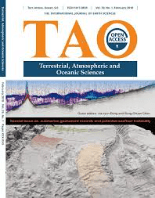
TERRESTRIAL ATMOSPHERIC AND OCEANIC SCIENCES
Exploring the Depths of Earth and SkyTERRESTRIAL ATMOSPHERIC AND OCEANIC SCIENCES, published by SpringerNature, is a distinguished peer-reviewed journal that has been an essential platform for innovative research in the fields of atmospheric science, oceanography, and Earth and planetary sciences since its inception. With an Open Access policy established in 1990, the journal ensures wide dissemination of knowledge, allowing researchers, professionals, and students to access cutting-edge findings without restrictions. Based in Switzerland and featuring a comprehensive coverage from 1996 to 2024, the journal currently holds a Q3 ranking across various categories, indicating its growing significance in the scientific community. Although it is positioned within the 39th percentile in Earth and Planetary Sciences, its commitment to fostering high-quality research makes it a valuable resource for advancing understanding of terrestrial environments and their interconnections. Researchers seeking a platform for their work in atmospheric and oceanic sciences will find TERRESTRIAL ATMOSPHERIC AND OCEANIC SCIENCES to be an ideal venue for sharing their insights with a global audience.

SOLAR PHYSICS
Pioneering Solar Research: Bridging Theory and ObservationSOLAR PHYSICS, published by SPRINGER, serves as a pivotal platform for the dissemination of groundbreaking research in the fields of Astronomy and Astrophysics, as well as Space and Planetary Science. With an impressive impact factor and ranked Q2 in both categories as of 2023, this esteemed journal has become integral for scholars seeking to advance their knowledge in solar phenomena and related disciplines. Originating from the Netherlands and converging from 1967 to 2024, SOLAR PHYSICS features a diverse array of articles, from observational studies to theoretical analyses, contributing significantly to our understanding of solar activity and its influence on the heliosphere and beyond. Researchers, professionals, and students alike will find this journal an indispensable resource for current trends and comprehensive insights in solar research.
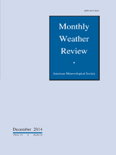
MONTHLY WEATHER REVIEW
Navigating the Complexities of Weather SystemsMONTHLY WEATHER REVIEW, published by the American Meteorological Society, is a leading journal in the field of atmospheric science, recognized for its rigorous peer-reviewed articles that contribute significantly to the understanding of weather patterns and climate systems. With an impressive Q1 ranking in the 2023 category quartiles and a strong standing (#41 out of 148) in the Earth and Planetary Sciences Scopus rankings, the journal serves as an essential resource for researchers, professionals, and students alike. Although it does not currently offer open access, its comprehensive coverage of meteorological research spanning from 1960 to 2024 makes it invaluable for those seeking to stay at the forefront of developments in weather analysis and prediction. Situated in Boston, Massachusetts, this journal not only showcases pioneering research but also emphasizes the importance of collaborative efforts in the meteorological community, ultimately contributing to advancements in our understanding of atmospheric phenomena.
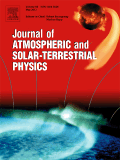
JOURNAL OF ATMOSPHERIC AND SOLAR-TERRESTRIAL PHYSICS
Pioneering Insights into Atmospheric and Solar-Terrestrial PhysicsJournal of Atmospheric and Solar-Terrestrial Physics, published by Pergamon-Elsevier Science Ltd, stands as a pivotal academic resource in the realms of Atmospheric Science, Geophysics, and Space and Planetary Science. With an ISSN of 1364-6826 and an E-ISSN of 1879-1824, this journal encompasses a robust collection of research findings and reviews that address the intricacies of atmospheric processes and solar-terrestrial interactions. The journal has shown consistent academic performance, earning commendable rankings in 2023, including Q3 in Atmospheric Science and Q2 in Geophysics, reflecting its importance for scholarly communication and advancement in these fields. Spanning an impressive convergence of research from 1997 to 2024, it aims to foster interdisciplinary collaboration and inspire innovations among researchers, professionals, and students. Although it currently does not offer open access, the journal is committed to disseminating high-quality content that continues to drive forward our understanding of complex environmental phenomena.
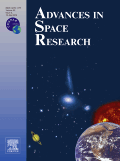
ADVANCES IN SPACE RESEARCH
Charting New Territories in Planetary Sciences.ADVANCES IN SPACE RESEARCH, published by Elsevier Science Ltd, is a leading journal in the fields of Aerospace Engineering, Astronomy and Astrophysics, Atmospheric Science, and more. Since its inception in 1981, this journal has dedicated itself to the dissemination of high-quality research contributing to the understanding of space and planetary sciences through a multidisciplinary lens. With an impressive impact factor reflected in its positioning within the Q1 and Q2 quartiles across various categories, it serves as an essential resource for researchers and professionals alike. The journal's rigorous peer review process ensures that only the most relevant and groundbreaking studies are published, making it a cornerstone for those navigating the complexities of space research. The journal is accessible by subscription, inviting a global readership to engage with trailblazing research that influences future advancements and fosters collaborations across the scientific community. With a reputation for excellence, ADVANCES IN SPACE RESEARCH remains committed to pushing the boundaries of knowledge in the ever-evolving field of space exploration.